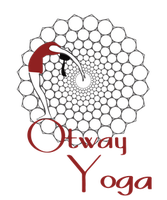INTRODUCTION
|
Welcome to Lesson 1 of the Beginners 10 Part Course.... Before commencing your classes you will need to find a space where you can practice on a regular basis. When looking for a place to practice, It is best to find a quiet, clean space where there will be no distractions. You can practice at any time of the day however It is advisable to achieve some consistency on when you practice, obviously the more you practice, the more you will benefit. It is recommended to wait 3 hours after a main meal and 1 hour after a light snack before practice. Do not hold your breath whilst practicing and always breathe in and out through the nose. Do not strain yourself, listen to what your body is trying to tell you. If you feel sharp pain, stop what you are doing and discuss the matter with your teacher, Melissa or a health practitioner. If you have any back issues or joint problems such as the hips, knees ankles etc, or you are menstruating please step the feet apart instead of jumping when going in and out of the standing poses. Start with class 1 and then follow up with the short class later on in the week. You may practice these classes as many times as you wish before moving on to Lesson 2 Before commencing your class ensure that you have the required props necessary. Later on in the course we will be using a chair, you do not need a fancy yoga chair just an ordinary kitchen chair will do. Please note that Mel, the teacher will be mirroring you through the majority of the classes. Minimum props required for the course:
|
NAMASTE
(Namaste - The divine presence in me respectfully recognises the divine presence in you)
(Namaste - The divine presence in me respectfully recognises the divine presence in you)
LESSON 1
|
CLASS 1
Props Required - 2 blocks, 2 blankets and a belt Duration - 58 minutes |
SHORT CLASS
Props Required - 2 blocks, 2 blankets and a belt Duration 20 minutes |
BENEFITS OF A YOGA PRACTICE
Practicing Yoga improves overall health and well being, some of the benefits include:
It strengthens and benefits the:
Practicing Yoga improves overall health and well being, some of the benefits include:
- Increased freedom of movement
- Improved balance, concentration and alertness
- Improved posture
- Greater relaxation and calmness
- Increased body and mind awareness
- Increased muscle strength and tone
- Encourages self care
It strengthens and benefits the:
- Circulatory system
- Respiratory system
- Digestive system
- Muscular skeletal structure
- The brain and nervous system
- The mind and the emotions
- The hormonal and endocrine system
- Immune system
WHAT IS IYENGAR YOGA
Iyengar Yoga was developed by Yogacharya B.K.S Iyengar (1918 - 2014). He was a world renowned yoga teacher who inspired many yoga practitioners around the globe. He wrote numerous books including Light on Yoga, which contains detailed descriptions of 200 postures.
From a young age, he suffered from many illnesses and believed he overcame them through the practice of yoga. At 16, he was introduced to yoga by his guru Sri T. Krishnamacharya. Years later he went on to create his own style of yoga known today as Iyengar Yoga.
Mr Iyengar described yoga as a "timeless pragmatic science evolved over thousands of years dealing with the physical, moral, mental and spiritual well being of man as a whole". It is based upon the philosophical writings of yoga compiled by Patanjali in his text The Yoga Sutras.
The distinguishing characteristics of Iyengar yoga include precision, alignment, timing, sequencing and repetition.
Precision and alignment of the poses are essential for maximum physical, physiological and psychological benefits. This may be achieved with the use of props (designed by B.K.S Iyengar), such as chairs, blocks, bolsters and belts. These props can be used to help achieve perfection in the asana, particularly assisting those who have poor mobility, are fighting disease or recuperating from illness. Precision and alignment are also paramount to avoid any potential injury.
Timing in Iyengar Yoga refers to the duration of time held in a given asana (pose). As a practitioner matures in their practice, the need to use their will power (which is essential in the beginning) to hold the asana is lessened. The practitioner is able to stay in the pose with more stability and grace, and be in a space of contemplation rather than determination.
Sequencing of the asanas is also very important in Iyengar Yoga as different poses create different effects within the body. For example, a practitioner may irritate the nervous system if preparations for inversions and backbends are not done in the appropriate order.
Repetition of the asana aids the practitioner to develop a deeper understanding of the basic body parts, and the body's movements, stability and flexibility.

